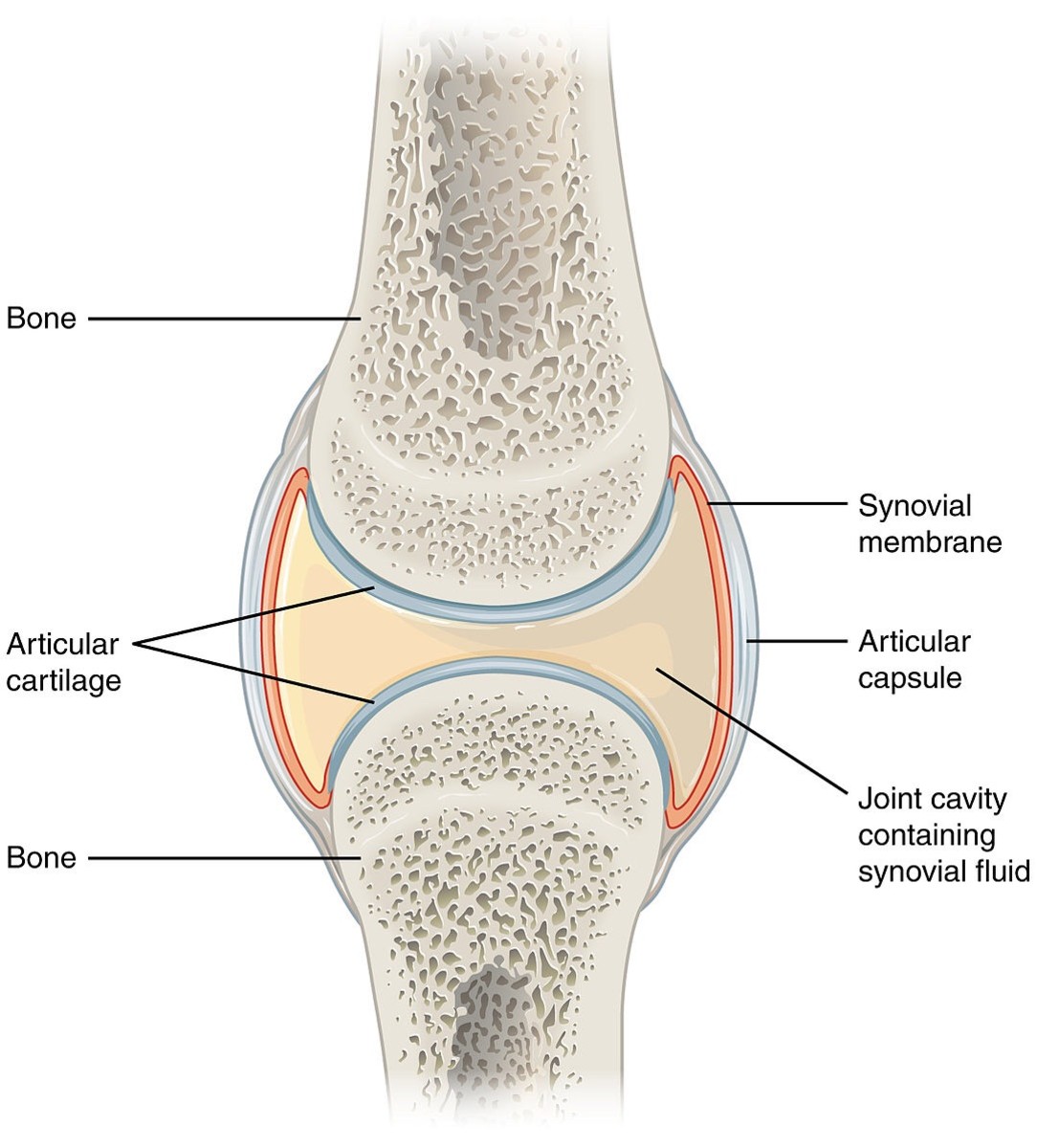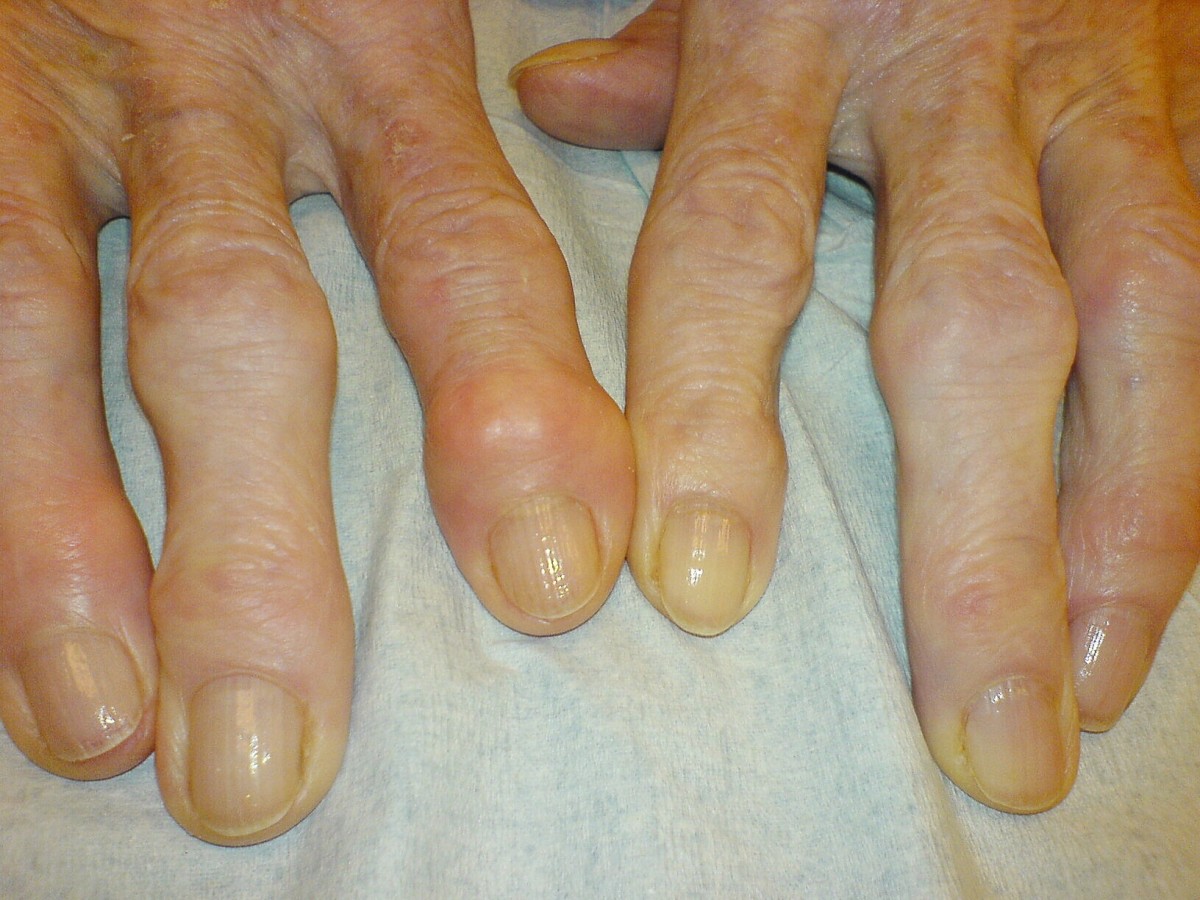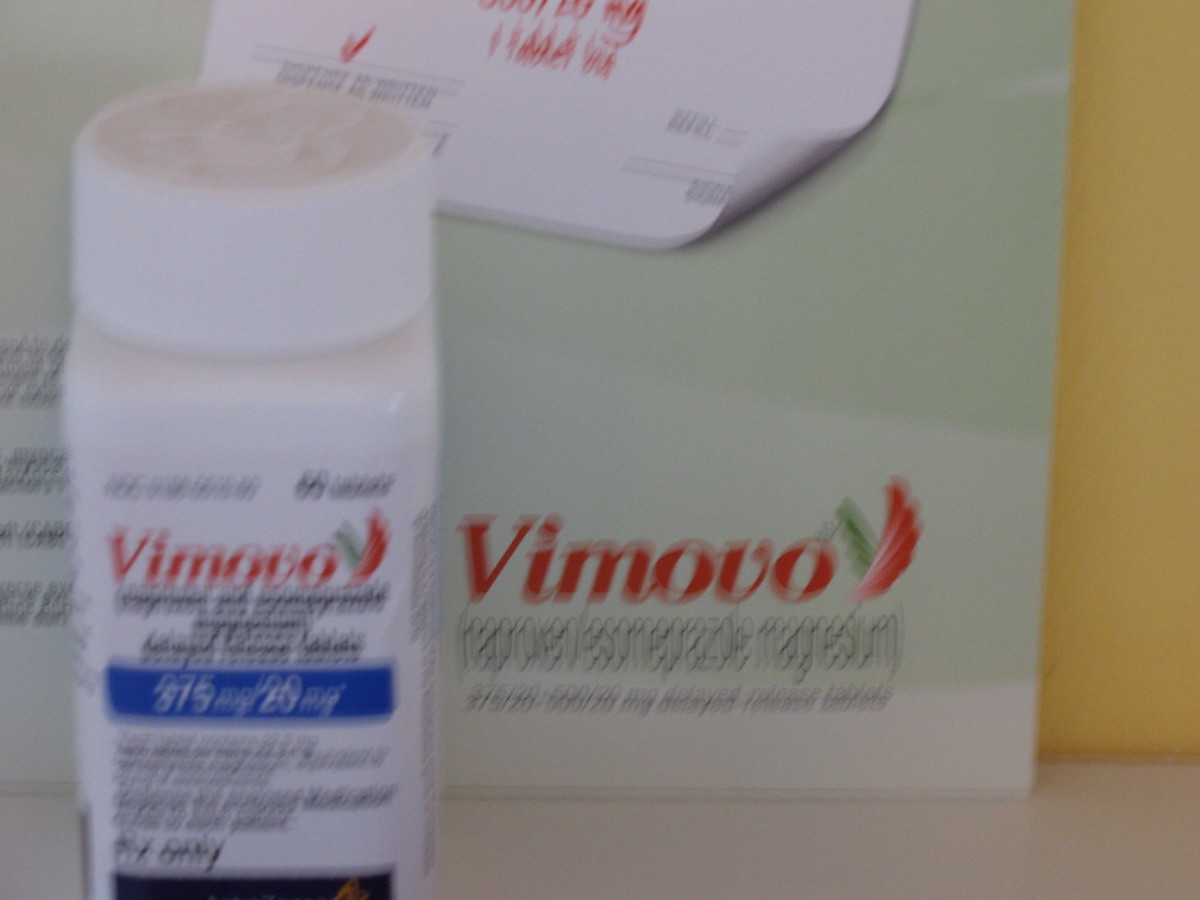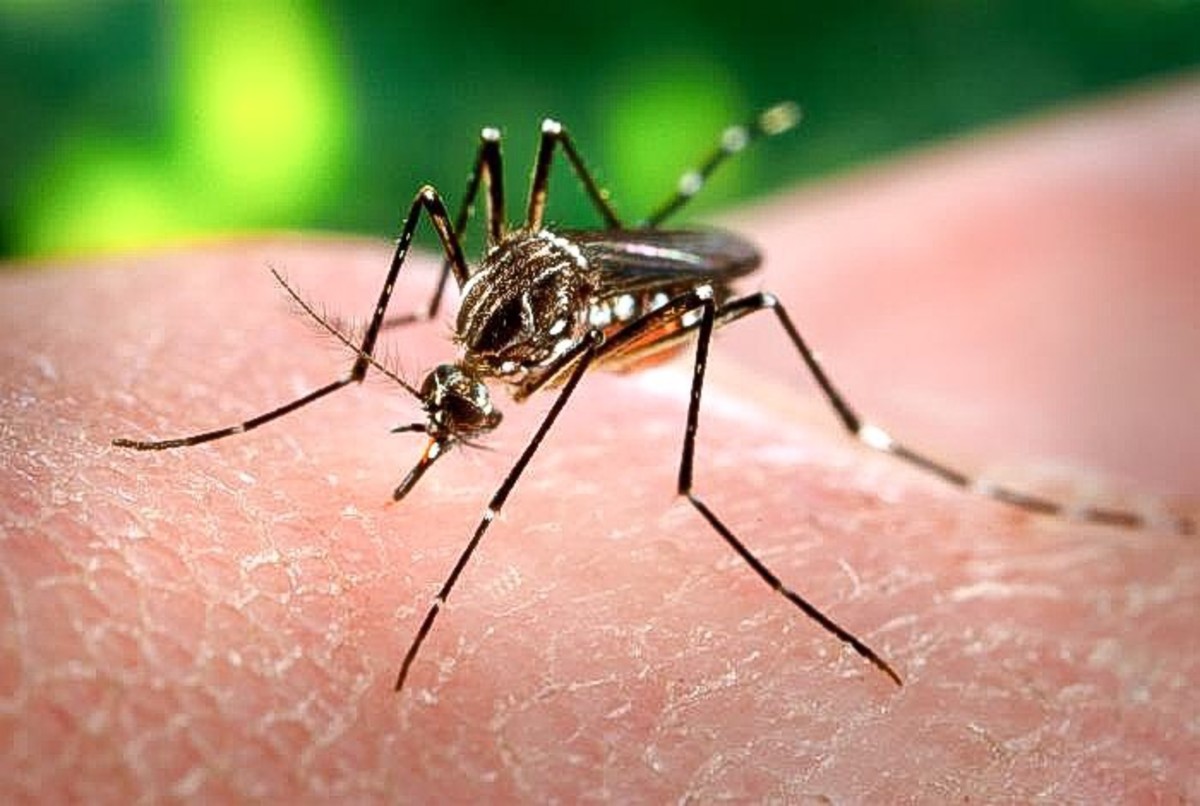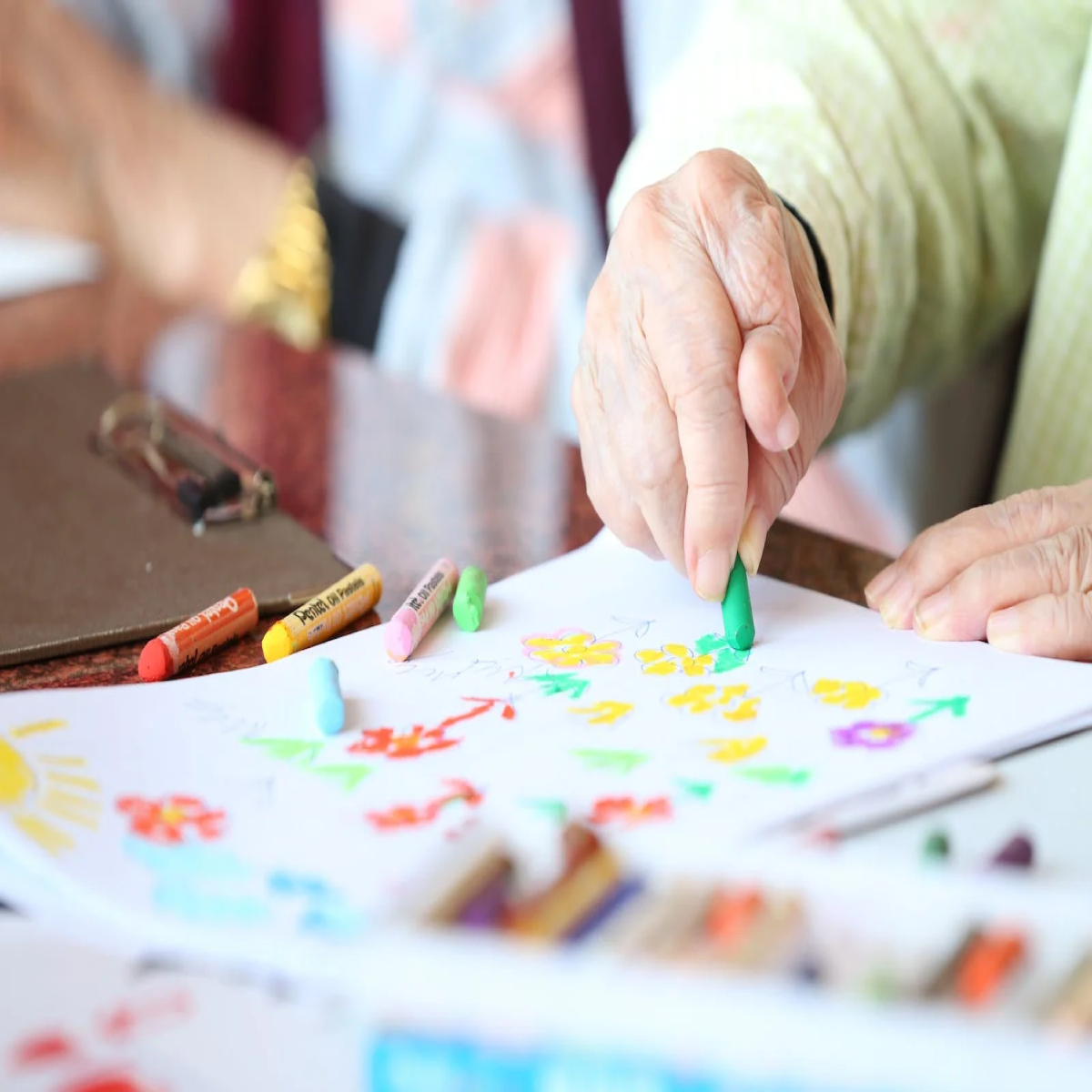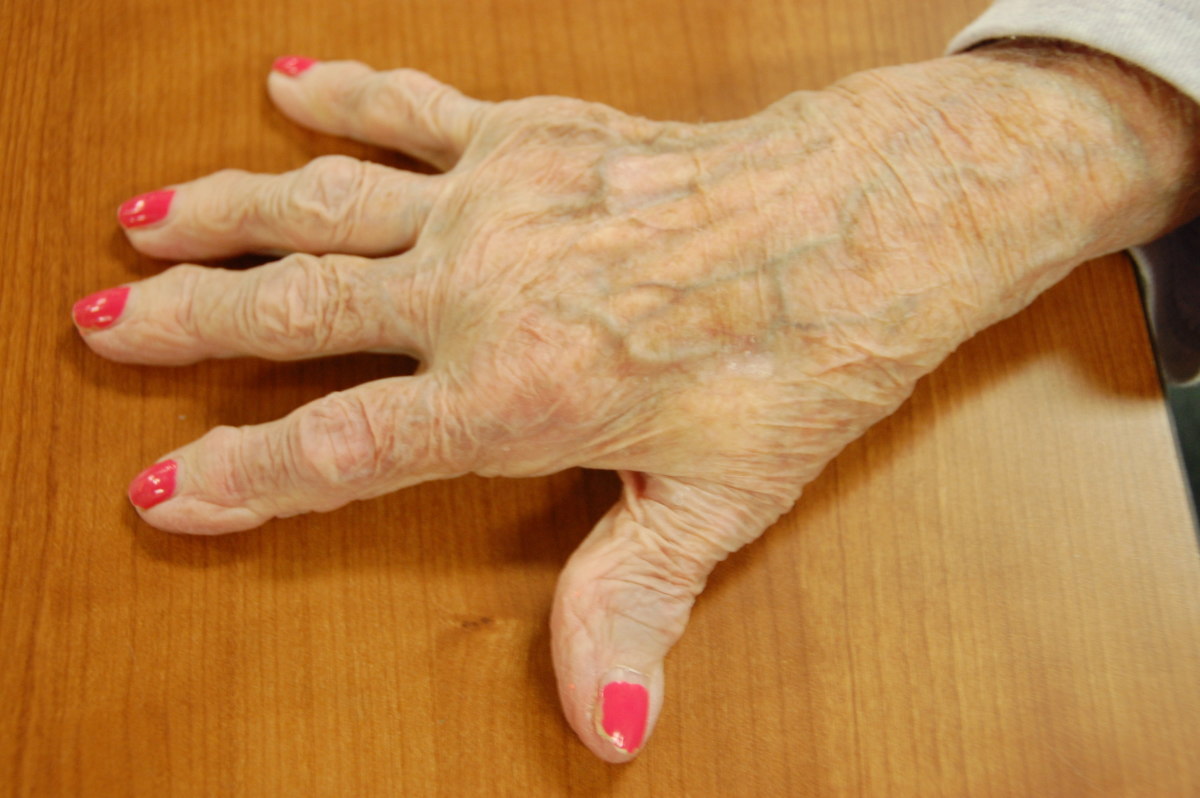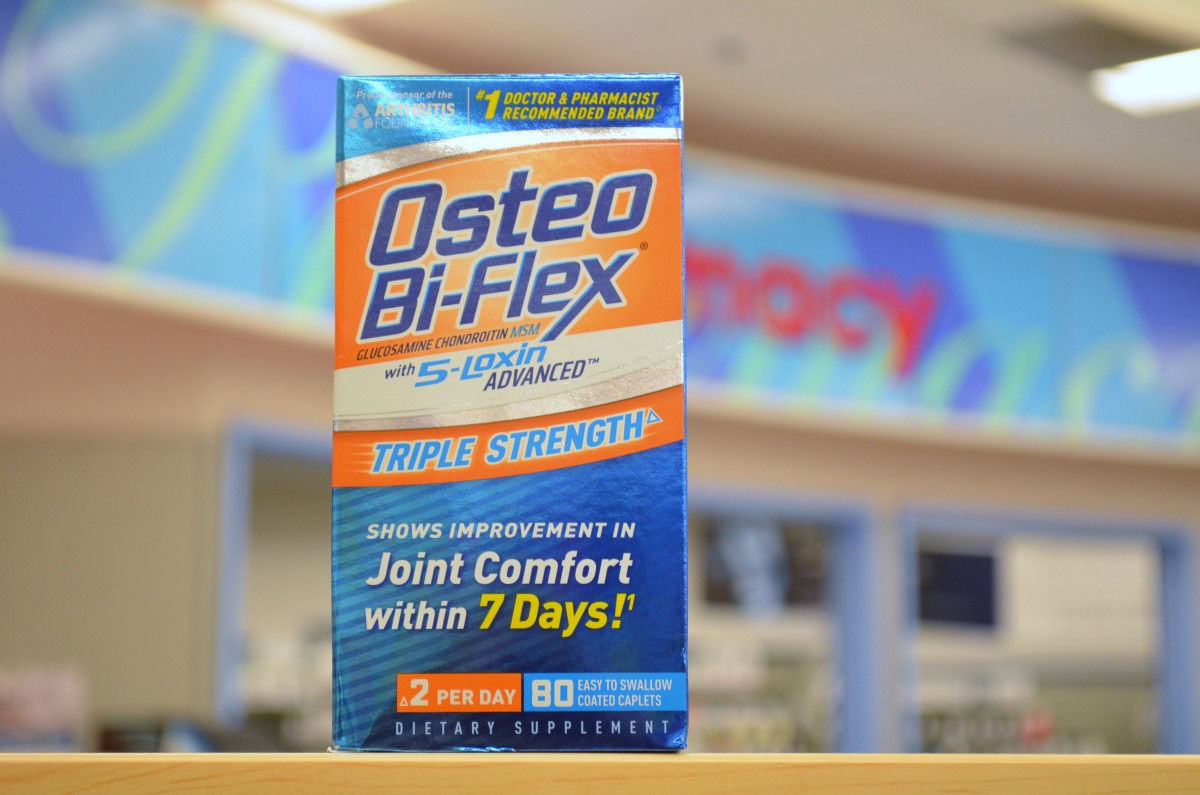Heal Yourself: The Most Effective Treatments for Rheumatoid Arthritis
People do heal themselves from Rheumatoid Arthritis
I've been a holistic healer for over 30 years. Six years ago, my wife came down with Rheumatoid Arthritis (RA). Today, she is bouncy and healthy. If you look on most medical sites, especially those paid for by pharmaceutical advertising, you will learn that RA is "incurable"; that the drug treatments that sometimes lead to remission have dangerous - even deadly - side effects; and that without treatment, pain and crippling are certain to follow sooner or later. Without joint replacement, it seemed, my wife might well be in a wheelchair for the rest of her life. With joint replacement, she would need one surgery after another, because RA affects all the joints on both sides.
This didn't look like a fun future. And it wasn't true at all.
Western medicine offers diagnosis, prognosis, and treatments. Most don't separate out those three.
- Diagnosis. I believe that diagnosis is a wonderful part of Western medicine. Putting a name on an illness and understanding part of how it works is very valuable to know, and gives us powerful healing options.
- Prognosis: This is where a danger lies. A doctor will tell you, "this is what will happen." But, in reality, medical diagnosis says two things: "This is what we think happened to other people before you." And, "this is the results we get from the treatments we offer." Doctors often don't know of non-medical approaches that make quite a difference. We discovered that people, even doctors, who have healed themselves of RA without using the latest medicines are "off the map" as far as the medical literature is concerned, and outside the awareness of most doctors. Kris even saw her medical chart and discovered she was rated as a "difficult patient" because she wanted to try exercise and diet before diving into risky chemotherapy!
- Treatments: It is best if we consider Western medical treatments as treatment options: as things we might or might not do. Every course of action has pluses and minuses. It makes sense to put together a whole course of action: mindset, diet, exercise, and medical treatment. That increases our chance for success. In the case of RA, the Western medical picture is changing. Until ten years ago, the options were pretty limited, and, following the Western path, pain and crippling were likely. But, in the last ten years, some new drugs - methotrexate and the biologics - do help people. The side effects are risky, but they can be the right choice.
Beyond reading the medical websites and getting a clear diagnosis, we did two deeper searches: one on the Internet, and one inside ourselves. And we found a very different story.
Beyond the medical websites, on the Internet, we found stories going all the way back to Dr. Bernard Jensen in 1925 of people stopping RA in its tracks, or even reversing it's crippling, painful symptoms. We also found six different approaches that had succeeded for different people, which I will share with you here.
Inside herself, Kris found two things which came forth with incredible clarity and purity. From a spiritual perspective, I believe these opened her path to healing. One was a prayer: "Dear God, may I be a witness to your love and show others your love and the strength you give your children. If it is possible, may I do this by being healed of this rheumatoid arthritis. If not, may I do it by living gracefully with the sufferings of this illness. Either way, may I be an inspiration to others." The second was a bright, energetic message from Kris's inner child: "Mommy, Dance!"
Use your doctors wisely
This article is not a substitute for mainstream medical diagnosis. And, if you are diagnosed with RA, a qualified rheumatologist should be part of your team. And, whether or not you choose each mainstream medical treatment (drug, chemotherapy, or surgery), it is important to make a conscious choice, taking into account your goals, your values, your current health situation, the risks you are willing to take either way, and, most deeply, what you believe will work. (Dr. Bernie Siegel's books, Love, Medicine, and Miracles and Peace, Love, and Healing, demonstrate this powerful conscious approach towards cancer. It works for RA as well.)
A qualified rheumatologist can use precise tests to monitor your progress. RA goes up and down, but also has a chronic tendency towards getting worse. And the first signs of this are not in your experience, they are found by repeating bone density tests, by checking blood chemicals, and so forth. Getting all the information you can about your illness is valuable. And a good doctor can discuss the benefits and risks of traditional medical treatment, as well.
At the same time, traditional medical diagnosis and treatment are only part of the solution. Whether or not you use Western drugs, chemotherapy, or surgery, the other tools mentioned in this article are all beneficial. Any points where certain dietary choices or supplements might not go well with Western treatments are included below.
So let's take a look at the six things that have helped Kris be healthy and bouncy: functionally free of rheumatoid arthritis.
The six things that helped Kris heal her RA
Here we go:
- Spiritual focus: Prayer (for those who believe in God) and meditation are very useful. Accepting the illness and also committing deeply to healing eliminates inner conflict, and opens the door to a wonderful life, and, sometimes, to healing miracles. Just living the life we have now - illness, healing, and all - with awareness, gratitude, and love can be a powerful way of changing our lives.
- Take charge of your health and your healing team: Create a team of family, friends, healers, and doctors. Let's make good choices, accept our fears, and go for healing.
- Sunlight: Healthy amounts of sunlight, perhaps supplemented with Vitamin D, have triggered remission for RA and other autoimmune diseases.
- Lively exercise: Protecting the joints, be as active as possible. This may mean a mini-trampoline, or swimming, or bicycling.
- Diet - eliminate certain foods: Different people have found that different foods can cause inflammation. When we find these and take them out of our diets, our health and energy improve, increasing comfort and also increasing the likelihood of remission. We've got a list of suspect foods for you.
- Diet - focus on certain foods and supplements: Different things help different people. We have a list of things to try.
Let's look at each of these, in turn.
Spiritual Focus: Acceptance and Dedication
Please let me share Kris's prayer with you once again:
Dear God, may I be a witness to your love and show others your love and the strength you give your children. If it is possible, may I do this by being healed of this rheumatoid arthritis. If not, may I do it by living gracefully with the sufferings of this illness. Either way, may I be an inspiration to others.
This prayer set the intention for everything else, and created a framework for her healing. And you can do the same for yourself, whether or not you believe in God. There are three key elements:
- Acceptance of what is. We feel better and worse, day by day. We get good news and bad news from our doctors. We may even have to deal with diagnostic errors, or with people who think they know what they are talking about, but do not know the real options and possibilities. When we accept, "this is what is, and this is my best understanding," we gain leverage. That is, we gain the ability to deal with what is, and the best chance to move it to become the healing we want.
- Dedication or commitment. Each day, to the best of our ability, we want to be committed to feeling as good as we can, taking good care of ourselves, doing all that we can, resting and nourishing ourselves, and growing or learning on the path of life and healing.
- Letting go of the future. It does not work to give up. Nor does it work to insist that healing must happen on our own schedule. Healing is like gardening. We plant the right seeds. We fertilize and water. We pull the weeds and keep away the bugs. And then, with patience - oh, how difficult patience can be when pain is severe, or when we can't even walk - with patience, we wait to see what unfolds from our constant self-nurturing.
This framework allows us to keep a steady focus as the feelings of illness and disability come and go. Whenever we feel a bit more freedom of movement, a bit more energy, or a little less pain, we are encouraged. On a day when things are more difficult, we are naturally discouraged. But, if we pray a prayer like Kris's every day, we do what we can when things are better, and we do our best, even when things seem to be getting worse. It also helps to keep a journal of our feelings - to face them and let them go. This has been proven to help with RA.
Spirituality is not only about how we live with illness. A key question in healing is: What makes your heart sing? In the case of rheumatoid arthritis, it may be even better to ask: What makes me want to get up and dance? For, when you want to dance, you will dance. And the crippling and pain will fall away. Kris and I celebrate her recovery when we go out on a date and dance - even if no one else is on the dance floor.
A diagnosis of crippling, like a fatal diagnosis or life-threatening accident - can make us re-evaluate our lives. If we then focus on what makes us want to live, then we have the greatest chance for life and health.
Sunlight
Sunlight, perhaps supplemented with Vitamin D3, has sometimes triggered remission from RA and other autoimmune disorders.
Most of the reports of danger of skin cancer from sunlight are inaccurate. If we eliminate trans-fats (margarine and processed oils) from our diets, then sunlight itself, in moderation, does not appear to cause cancer. And moderation can be quite a lot of sun! Sunbathing up to four hours a day can be good, but a lot less can be enough, too. In southern climes (say, below Washington, DC), and during the summer, avoid full sunbathing between 10am and 3pm. When first getting a tan, use mild suntan lotion (say SP 8 to 16), allowing your tan to darken without allowing sunburn. Spend more time in the sun during the winter, as best you can.
Full sunbathing is not necessary. Kris gets most of the sun she needs riding her bicycle to work (about 40 minutes a day, round trip), and then occasionally sunbathes. If symptoms are getting worse, or if you just feel low energy or down, get some more sun into your life!
The right dose of Vitamin D appears to be at the center of the connection between sunlight and improving RA and other autoimmune disorders. For some people, it is important to get only natural sunlight, and to allow the body to manufacture the vitamin D from sunlight. That is, it may be that, for some people, it is more important that they make the vitamin D than that they have it in their bodies. For others, supplementing with Vitamin D can help, especially along with moderate sunlight.
Be sure to consult a doctor, and perhaps also a nutritionist or holistic medical professional, about vitamin D, or any other vitamins, minerals, or supplements that you try. Even more importantly, consult your body. With RA, most of the things that are good for you make you feel good. If you are feeling more relaxed, having more energy, and aching less, those are all good signs.
Lively exercise
Obviously, exercise is a challenge with RA. But it is a challenge to your RA, as well! Creating safe ways to dance, stretch, and move sends a message to the body: I want to dance, I want to stretch myself, I want to move! And then the body can respond to this message by giving us more energy and healing our joints.
There are three major symptoms of RA:
- Aching, stiff joints, usually bilateral (that is, the same joints on both sides)
- Flu-like episodes with fever and weakness
- Generally being weak and tired, anything from "a bit under the weather" to something that can feel like moderate depression
All of these get in the way of dancing life, of fun and movement. In self-awareness, people with RA often find that resistance to dancing life, or fear, can be a part of the cause of the illness. When we get in touch with our deep desire to dance and live life, and face our fears, our chances of remission grow.
Of course, with painful, damaged joints, some of that fear is real. So our first step is to protect those joints:
- Go for no-impact or low-impact exercise
- Use wrist braces and other support when necessary, including throughout the day
- Get a high-quality, safe mini-trampoline, also called a rebounder. One excellent brand is the Cellerciser(tm).
- Walk in a pool, swim, or do water aerobics to lighten the load
- Pay attention to the joints, and do not demand too much of them (except in physical therapy)
Although we want to be careful with our joints, the same is not always true of feelings of tiredness and exhaustion. Now, if you are in the middle of a flare-up, with pain and fever, keep everything as gentle as you can, and conserve your energy. During Kris's flare-up, I drove her to work every day so that she wouldn't even have to walk from a handicapped spot to the door of her office. But, once the flare-up was over, she was bouncing and bicycling as soon as she could.
But when you're not in the middle of a flare-up, do all you can to dance. If you don't feel like exercise, try it for five minutes, then decide. If you're still tired, your body is telling you to take it easy. If, after five minutes, you're starting to perk up, that tells you your body wants to feel better and is ready for exercise. Keep going!
During the worst of her illness, after her flare-up, when her joints were stiff, Kris got some physical therapy. The guy literally bent her elbows back to straight. This is painful, but not as painful as it sounds. And it is worth it. Increasing range of motion is difficult, and requires expert assistance. Physical therapy is one option. It can also help to work with massage, Pilates, or yoga. Be sure to work with a practitioner who is experienced with working with people with disabilities and familiar with RA.
Diet: Eliminate certain foods
A key to reducing the pain of RA, and sometimes triggering remission, is the elimination of inflammation. Inflammation has many causes, including:
- allergies and sensitivities to certain foods
- yeast infection, which is made worse by certain foods
- unusual immune responses
Most Western medicine does not take into account the inflammation created by the American diet. Just moving to a healthy diet and reducing inflammation is a start on the right path. And stories of RA remission make it clear that some people can find a single trigger, that, when removed, prevents flare-ups and generates remission. For others, it is more complicated. But keep dancing, and cooking, and find the right mix for you.
Each of us has a different body, with different sensitivities. For some, eliminating a particular food can create a crucial difference. Others need to find the right combination of foods to get rid of, and to add, and then we start to feel better. For more about this general approach, see my hub article, "Is there a right way to eat?"
Specifically for RA, many people have found these can help:
- Eliminate, or deeply reduce, wheat and gluten. Gluten is the protein found in wheat and related grains, such as barley. For most people with RA, we do not need the absolutely strict gluten-free diet that people with celiac disease require. For example, we can eat oats that are not certified gluten-free. But taking wheat out of our diet and reducing gluten as much as possible often helps our joints feel better and recover.
- Eliminate trans fat. This is essential. Trans-fat is an artificial chemical never intended to be eaten by anyone. This means no margarine (except the newer ones that are labelled "no trans fat"), and no hydrogenated oils. Check your labels - supermarket baked goods are mostly out!
- Eliminate all artificial sweeteners, artificial colors and flavors, fortified ingredients, anything with chemical names, and even natural flavors. Read labels carefully, and do not buy items with those words in the list of ingredients. Some of these may not be a problem for you. But some can create big problems, even in tiny quantities. It's better to be safe than sorry.
- Minimize animal fat (except for fish oil). Of course, you can go all the way with this and go on a vegan diet. Or, more moderately, you can eat only 0% milk (skim milk) products, and fish and skinless chicken and egg whites.
- Minimize sugar. Sugar creates inflammation directly, and also feeds yeast if you have a yeast (Candida) infection. This means cutting way down on white sugar, brown sugar, honey, maple syrup, concentrated fruit juice, agave, and any other sweeteners. Also, if you're just starting out, or in a flare-up, measure fruit juice by the quarter cup and dried fruit by the tablespoon. The one exception is stevia: If you like it, and it feels good to you, then it is healthy for you.
- Pay attention to caffeine. It may be good to cut back, or, perhaps, eliminate it altogether. Some people benefit from cutting down from coffee to black tea, or green tea, or decaf tea. (That's the order of less and less caffeine.)
No, we don't want to take all the fun out of your food! Read on for healthy foods you want to be eating.
Diet and supplements: Feed yourself, not your RA
There are plenty of healthy foods you can eat. Let's start with some powerful supplements that reduce inflammation and can reduce joint pain, or even help bring on a remission:
- Curcumin, the active ingredient in the spice turmeric, was crucial for Kris. You can get it as a supplement, or you can simply spice your foods with lots of turmeric.
- Fish oil is a great supplement for RA. There is evidence that three or four 1,000mg capsules each day is a good idea.
In general, these supplements go well with each other and with most medical and alternative treatments. There is some concern, though, that fish oil and curcumin do not mix well with common pain relievers (NSAIDs, such as aspirin, Ibuprofen, and Advil). Thin blood - poor clotting and excess bleeding from bruises or cuts - is a possible side effect of this mix.
Now, let's look at foods to add to your diet, because they will help you feel better:
- Olive oil, raw as salad dressing, or used for cooking on low heat, is a very good choice.
- Walnuts, pecans, almonds, pumpkin seeds, and flax seeds are good sources of healthy, monosaturated oil.
- Greens, greens, greens. Lots of fresh or lightly cooked green vegetables reduce inflammation and can make a world of difference. Include dark lettuce, parsley, and the cabbage family greens (broccoli, broccoli rabe, kale, collards, bok choy, cabbage and more. These are especially healthy, containing vitamins a, b, and c, and calcium, too.
- Enjoy other fruits and vegetables. If there's a fruit or vegetable you like, eat it! Be careful about spinach and chard, as the calcium in them doesn't reach the body.
Now that we've looked at healthy foods and foods, let's look at creating an overall diet that will help you feel better, and might just bring an end to your RA.
Create a plan, and live the experiment
No two people are alike, and no two cases of RA are alike. Taking care of our health is very likely to increase our well-being, reduce debility, and extend how long we feel less pain and can do more. Up until now, remission has been rare, but possible. One of the reasons it has been rare is that most people tend to believe their doctors. And the doctors don't know about how powerful many of these spiritual, dietary, and lifestyle options can be. They see all remission not created by powerful and dangerous drugs as "spontaneous remission." Our experience and research indicates that people with RA may be able to trigger their own remission. But this kind of healing is an art, not a science.
I can easily imagine you saying, "With all these options, how do I know what to eat, or what to do?" The answer is simple, though not always easy: Listen to your body. Feel your body. Your body will feel better when it is less inflamed. And reducing inflammation is the key to success with RA.
Clearly, to create a program like this, you will need to avoid restaurants and prepared foods. Cooking from scratch is a very good idea. Making everything work in your own life, budget, and schedule is challenging. However, there is a blessing in it, as well. Kris used to be very disorganized. Now, surviving RA, she sees her life as a gift - and not just a gift to her. She is a professor and poet and scholar with a lot to offer. So she manages her life and time to stay healthy and give all she can.
Everyone's experience is different. Tune in, trust your intuition, listen to your body, and do what feels right, which is, fortunately, most of the time, what feels good.
Sometimes, though, you may have to push yourself a bit. For example, Kris experienced an odd effect where sometimes things would feel like they were getting worse. There was no flare-up - no fever. But her knees felt worse, then her ankles. She paid close attention to her body, and realized that her hips were feeling better first. It was as if the pain and stiffness were flowing out of the central joints, down the legs. So, as her hips felt better, her knees felt worse. Then as her knees felt better, her ankles felt worse. Then her ankles felt better, and she could walk and dance better than ever before. This wave of pain and healing passed through her several times as her mobility improved. These waves of uncomfortable healing are challenging, but if we stay with our program through them, the new improvement at the end can last a long time. Sometimes, at the worst of the pain, we can eat a little bit off our diet (say a teaspoon of jam), and it actually alleviates the pain. What a treat! But don't spiral back to eating unhealthy foods regularly, or you could block the healing.
So, start by eliminating the items listed above, in "diet: eliminate certain foods." Then try one new food or supplement at a time. If you're feeling good, getting sun, and enjoying exercise, you're on your way.
Throughout this process, the illness, and your life, will have ups and downs. We all go through that. A regimen of prayer, meditation, or spiritual reading is a good help. So is a life tip from Dan Millman, author of Way of the Peaceful Warrior: "A little bit of something is better than a lot of nothing." Say that, on a good day, you exercise on your rebounder 20 minutes a day. On a bad day, cut that down to 5 minutes, but always do something, even when you feel like you can't. Be careful and be determined. Kris's determined spirit was a big part of her healing.
Some people use more intensive natural healing methods and have success improving RA, or even triggering remission. This goes all the way back to Dr. Bernard Jensen in 1925. He was crippled with severe RA that included spinal arthritis. His back was bent, and he was almost unable to move. He found that juice fasting - eating no food, but drinking the juice of many healthy fruits and vegetables - brought about a complete remission. What is most amazing in his case is that his fasting and self-care actually reversed his spinal arthritis. His spine straightened and he was able to walk upright, move freely, and live pain-free.
Dr. Jensen opened the door to natural nutrition and fasting as methods for healing. Fasting is very powerful - but can be dangerous, too. Monofasting (eating just one food) and juice fasting are alternatives. If you want to try these options, or other types of intestinal cleanse, please work with an experienced holistic practitioner.
Other people have found various cleansing diets useful. And anything you believe in is worth trying. Kris tried acupuncture, but found it not very helpful. Your experience might be different, though. Perhaps, for you, acupuncture or Chinese herbs brings the cure. Or yoga and an Ayurvedic diet from India. Or the Mediterranean diet. Even more esoteric things might be right for you, too. Kris found that kinesiology (muscle testing) was a good way to choose what to eat and what not to eat, and she found flower essences helped, too. (We get support for this approach from www.Perelandra-ltd.com.) On the other hand, Kris felt no interest in crystal healing. But maybe that will work for you.
But how does RA work, and how can we sometimes trigger a remission. Our best guess is in the next section.
How does RA work?
How does RA work, and how do we create the greatest chances of bringing about a remission?
The body - and even more the bodymind, our whole, living being - is a mystery. And each of us is different, and each of us has a different pattern of disease. Living is uncertainty, and living with RA is even more uncertain.
Please learn to enjoy it! That is the best - and toughest - piece of advice I can give.
If we can learn to live with uncertainty - and stay relaxed and joyful - we are in the best position to create healing. Why? Because life is uncertain, and joy and relaxation are freedom from fear. Fear, anxiety, and tension create a lot of chemicals in the body that keep physical stress going - and physical stress generates inflammation. So peace of mind and joyful living, themselves, are part of our healing.
Our best understanding is that RA is an autoimmune disorder. At some point, the immune system makes a mistake, and thinks that joint tissue is a foreign body. The immune system creates antibodies that attack joint tissue. This causes swelling, pain, stiffness, limited mobility, and, eventually, joint degeneration.
Medical approaches include anti-inflammatories and immune suppressants. But these have their risks. Prednisone, a common, and relatively safe, anti-inflammatory, can cause bone loss. In Kris's case, a very small dose of prednisone caused significant bone loss, so she stopped using it, and found natural anti-inflammatories (like curcumin), instead. They may not have brought relief quite as fast, but she could stay on them long term. Immune suppressants have an obvious side-effect - suppression of the immune system. Sure, we want to stop the RA, but do we want to stop fighting off other illnesses? Not unless we have to.
The holistic remedies work in a different way. The key is that RA is based on a cycle - the attack on joint tissue creates inflammation in the joints, and inflammation in the joints tells the immune system that something is wrong. Then the immune system redoubles its attack. Our goal is to break this cycle. There are several ways to do this, and they work best in combination:
- Overall reduction of stress and inflammation. We work to create this on all levels. Spiritual affirmation of life; connecting to sunlight and nature; a positive mindset; emotional clearing through journal and therapy; healthy diet; and healthy physical activity.
- Caring for the joints and the pain. Without coddling ourselves, we take good care of ourselves, preventing injury and giving the message "the body is safe, the joints are working."
- Distracting the immune system. This is one of Kris's most interesting discoveries. It started when she got a mosquito bite or a scratch in the garden near, but not on, a joint. It swelled up, then healed. And, when the swelling went down, the joint felt better, too. It seems that, if the immune system is given a job to do, it does it, and it stops attacking joints to take care of the other problem. Now, we're not suggesting that you give yourself cuts or become a bee keeper. But a bit of gardening and a few scrapes and bruises may just be the ticket, if you're not on immune-suppressant drugs.
Kris's experience with the mosquito bites and scratches from the garden gave her a new image. She began to see her immune system as a friendly, but over-protective guard dog. So she set out to retrain it. Using loving self-talk, keeping a journal, and using guided imagery, she guided her immune system away from her joints and on to more useful tasks. I believe that healing happens when creativity meets our suffering.
Create a Path for Hope
We hope you understand that this article does not promise a remission from your RA. But we do want you to have hope, and to set aside the gloomy predictions and prognoses you have almost certainly heard. Your health is in your hands, your heart, and your mind. Now, give it to your joints!
If you do have a flare-up, don't despair. But don't try to rush it to an end. Give yourself the most rest you can, eat well, and meditate or pray a lot. This is a time for healing and nourishment, not for progress. Use pain relievers and Prednisone intelligently, if you want. After the flare-up ends - and it will - then build a strong program to avoid the next.
Healing is a journey, Keep at it, keep taking care of yourself, and enjoy life as best you can. We can never know, but healing might be just around the corner. Here are some success stories to keep you inspired:
- Kris's flare-up was six years ago. For the last four years, she has not needed any pain relief medication, has had no flare-ups, and her morning stiffness is trivial. She cannot go for long walks, but can walk on stairs and do all the walking she needs to do for her life and job as a professor. And she rides her bike daily. As for the long walks - she had a bad knee from an old injury before the RA. Her energy is improving and she can work longer days. Now, we're working on healing the last of her symptoms.
- Kris met a woman who did basically nothing and went into remission decades ago.
- We heard about the daughter of a friend who moved to Florida, and the sunlight triggered a remission.
- And, on the other hand,a woman who ate an apparently perfect diet and was trying all kinds of alternative medicine for RA, but can barely walk. Kris says that, in that situation, she might try the new biologics.
- Kris's doctor knows of a woman who went the Western route, but the new drugs did not help. Still, she is a candidate for hip replacement.
Diet works for some, and drugs for others. Build a combination that works for you. As you build that combination, please use common sense. For example, don't try juice fasting, monofasting, or fasting without expert advice, or while on strong medication, or before surgery. Get excellent guidance for joint protection during exercise. And don't try a lot of things all at once.
Build a team to help you. Doctors can test for anemia, so you know if you need iron (such as Solgar's Gentle Iron (iron biscycinate)), and can test for bone loss. Friends can join you for exercise, run errands or take you places during a flare-up, and help you stay happy. And a health coach can guide you through difficult choices on your own path to joy and healing.
Kris and I are constantly researching helpful products and treatments. Please keep an eye on this site for new links and suggestions. And, if you need assistance quickly, please reach out. You can reach me at Sid@SidKemp.com.

